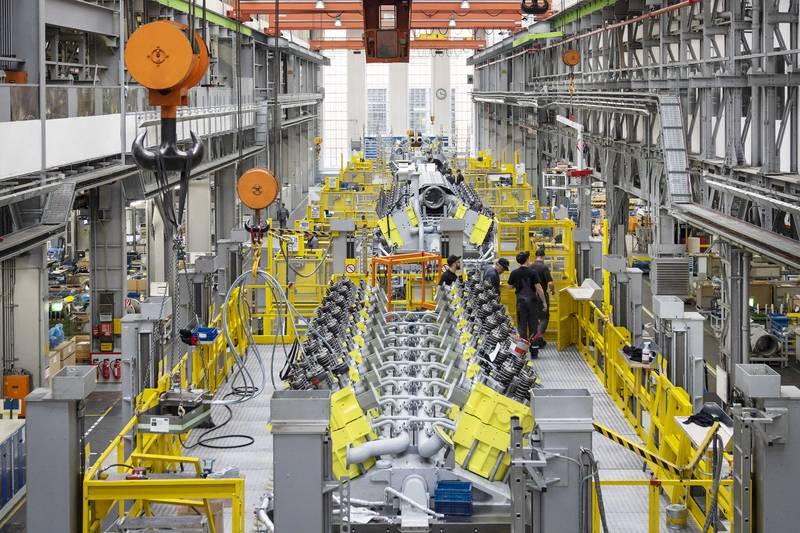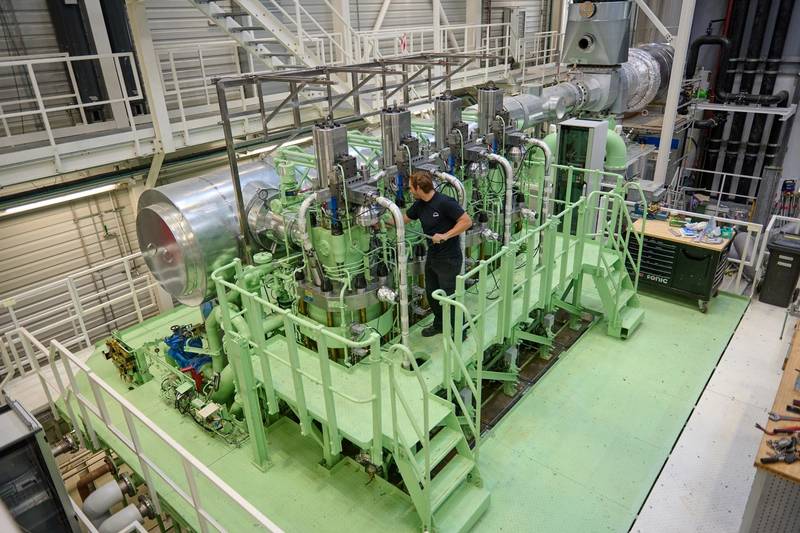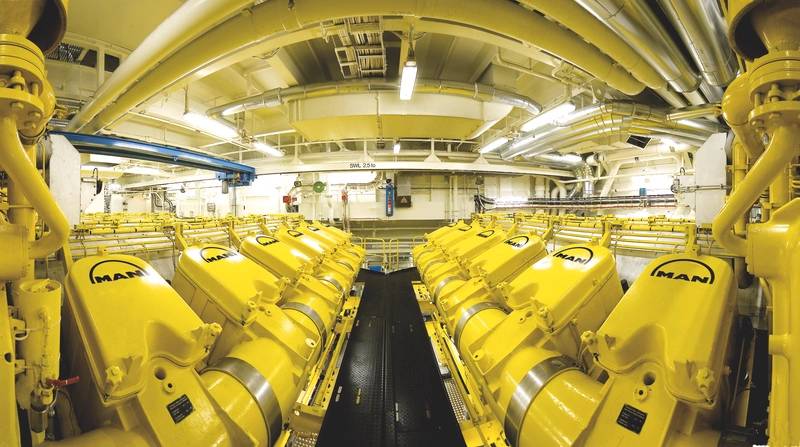

As the shipowners stare down decarbonization mandates that grow increasingly strict through 2050, the engine makers are at the tip of the spear of this energy transition phenomena, working to design and build engines and components that are built to operate on a long and growing list of alternative fuels. We recently visited with Dr. Gunnar Stiesch, CTO, MAN Energy Solutions, to take a look inside the research and development process at this global power leader, for insights on ‘what’s next’ in ship propulsion.
I am what you could call an “engine guy”, having worked with the technology in various functions for close to 30 years.
I was appointed to the executive board of MAN Energy Solutions as a CTO at the beginning of 2023, and my current function involves all responsibility for all our technology and product development activities, including both our two- and four-stroke engines, but also for our turbomachinery-related business.
Globally we have roughly 2,000 development engineers, with about 60% related to our engine business. The majority are located in Europe, primarily in Germany and Denmark, and part of our turbomachinery business in Switzerland.
 Production hall in Augsburg, Germany.
Production hall in Augsburg, Germany.
Image courtesy MAN ES
For the engines business we have eight engineering sites in six countries which are specialized on engines. That is in Augsburg, Germany; in Copenhagen, Frederikshavn andHoleby, Denmark; Saint-Nazaire, France; Aurangabad, India; Changzhou, China; and in Busan, South Korea. Almost all of these sites have their own engine testbeds, and also component test rigs to validate our products and technologies before we put them on the market.
In regards to the R&D efforts, Copenhagen is our center for two-stroke technology, with two large research engines and several component test rigs, whereas Augsburg is our primary center for four-stroke R&D activities, including full and single cylinder test engines and component test rigs.
We also have some sophisticated, specialized laboratories for solid materials, and for fuels and lubricants, labs we share for all parts of our engineering.
It's absolutely crucial. The technologies are available, but without regulations they will not be cost-competitive compared to fossil fuel technologies. The overall target has been set, but more detailed targets will have to be broken down and be decided within IMO within the next year, coming into force in 2027. That is crucial that this time schedule is met and is not further delayed, because basically you could say it is too late already. The technologies are available, but we need regulations to incentivize investments to make the new technologies, the new fuels cost-competitive compared to fossil alternatives. Another important part is to accelerate the production of green synthetic fuels. Investments in that area are also necessary and they will only start if regulations require the use of those clean fuels.
The first obvious challenge is to make sure that we allocate our resources to the right topics and the correct technologies. As you indicated, what we see at the moment is a combination of biofuels, methane, methanol, and ammonia. Hydrogen is probably something we’ll see [more] on stationary applications onshore and not so much on vessels, but the other fuels are serious candidates, and available to a large extent today.
When we look into our ‘crystal ball’ we see that right now, methanol has been very attractive in the last two years. We have gained a lot of orders, especially for container vessels, but also [there has been much] interest from ferries and cruise vessels. We expect that to continue to ramp up quickly, with maybe some 30% of all dual-fuel engines being on methanol. We expect ammonia to ramp up towards the end of this decade. Technology will become available soon [but the transition, with ships lasting 25-30 years] will take a very long time.
There is a need to address the existing fleet with retrofits. We are doing this and there is significant interest from customer, too.
[In analyzing the market for potential retrofit candidates] there is a significant number, maybe around 2,000 vessels with two-stroke engines, and another 1,000 four-stroke engines that are potential candidates for retrofit.
 Research engine at Research Center Copenhagen.
Research engine at Research Center Copenhagen.
Image courtesy MAN ES
A good example may be the two-stroke ammonia engine we are developing. The combustion characteristics of ammonia are very different from any other hydrocarbon fuel: it burns slower, it has different emission types, and also there are different safety aspects to be considered. We need to make sure that we get complete combustion, and we also need to make sure that, for example, laughing gas [N20] emissions are controlled.
Also the exhaust after-treatment will have to be looked at, as with the ammonia engine for example, balancing a potential ammonia slip with nitrogen oxides emissions and making sure it can be fully converted and neutralized in an SCR catalyst. It looks like that is possible, but again, more detailed work is needed.
Looking at the safety system, ammonia is highly toxic, so a safety philosophy needs to be adapted and crews need to be trained to do basic maintenance work at sea. For that reason, we have entered into cooperation agreements with customers, with ship operators, to set up training facilities and programs for crews.
The other big topic next to decarbonization is digitization, and large marine engines are equipped with smart electronic controls. They have hundreds of sensors around the engine, and with today's technologies, we can make the data available on a vessel and transmit it via satellite to shore to a remote operation center, for example. With that we can give new and much more detailed insight into the operation of the engine, into the health status of the engine, and make sure these equipment runs more safely, more efficiently, more cost-effective than it has ever done before.
At MAN, we offer to our customers a service called PrimeServ Assist, where we utilize this data and propose and suggest mechanisms and steps to always keep an engine in the most efficient state and most fuel-efficient, but also if there is a need for troubleshooting. We have approximately 1,600 vessels connected, and we are gaining more and more experience every day.
Engine development projects are complex, with dozens of people involved, so it's always a team effort. Nevertheless, I admit that I'm also personally proud on some of the achievements and successful executed projects. The first one is the two-stroke methanol engines which we have developed in 2015, with the first vessel sailing in 2016. It really took off in 2021 with many large orders, especially for container vessels, and today we have more than 200 large two-stroke engines on order, a number have been delivered and are in operation.
The second I would like to mention is on our four-stroke engine side, the development of our all new 49/60 engine platform; an entirely new platform with both inline and V-type engines, both for marine applications, for stationary applications, and prepared for all different kinds of fuel, at sea and on shore. And the first engines, both for marine applications but also stationary have been delivered are now going into operation. This engine family will set a technical benchmark for many years, and I'm really proud on that development too.
A couple of things. On the two-stroke side, finalizing the development of the ammonia engine, with a large first commercial engine ready for delivery end of the year, and then pilot installations and later on roll out to the market. On the four-stroke engine side, it is certainly methanol engines both for new builds and for retrofits, where a large number of engine types will come out in the next couple of years because there's a large interest, especially on methanol on the four-stroke engine side. But also, a priority remains looking at methane engines, on methane slip and reducing methane slip. There we have come a long way. There are two-stroke MEGI engines with close to zero methane slip today, but also on four-stroke engine side substantial reductions have been achieved.
 Engine room with MAN V48/60CR engine.
Engine room with MAN V48/60CR engine.
Image courtesy MAN ES
Watch the full interview with Dr. Gunnar Stiesch, CTO, MAN Energy Solutions on Maritime Reporter TV:



